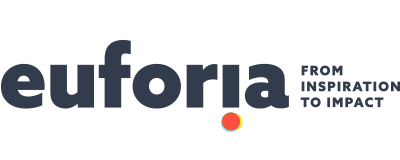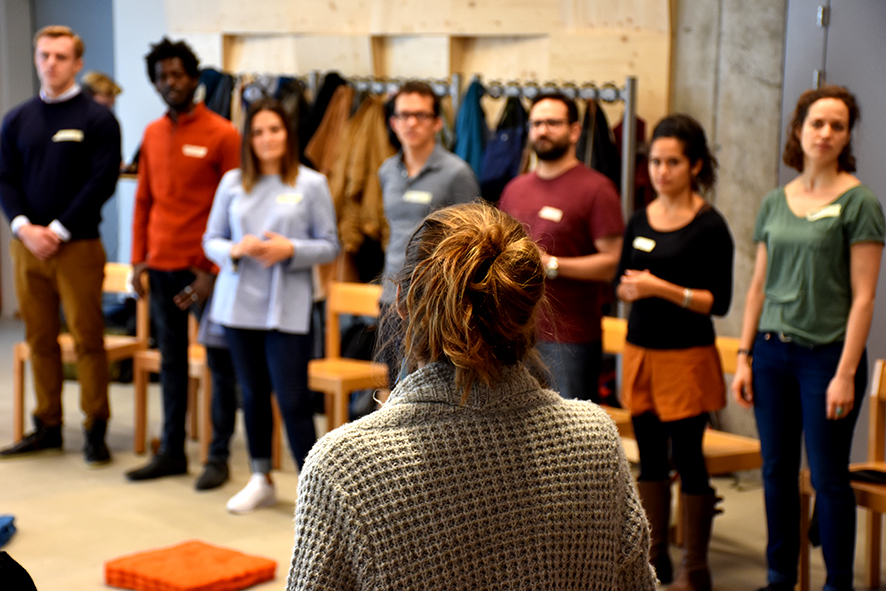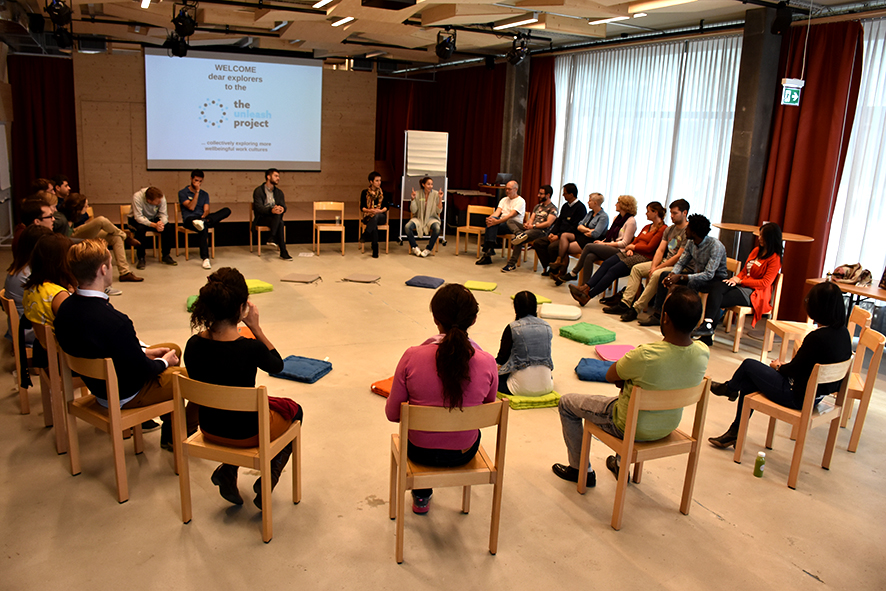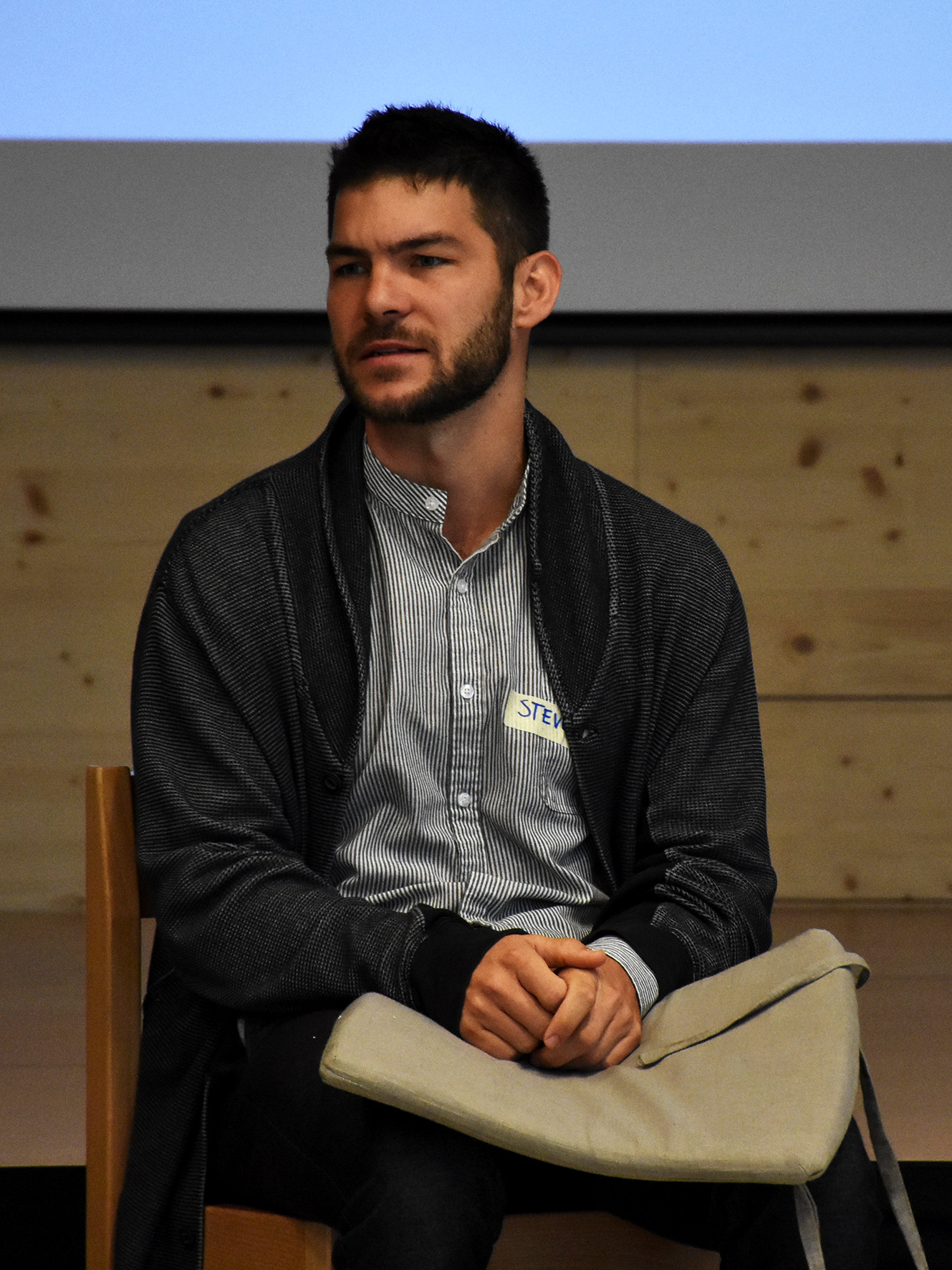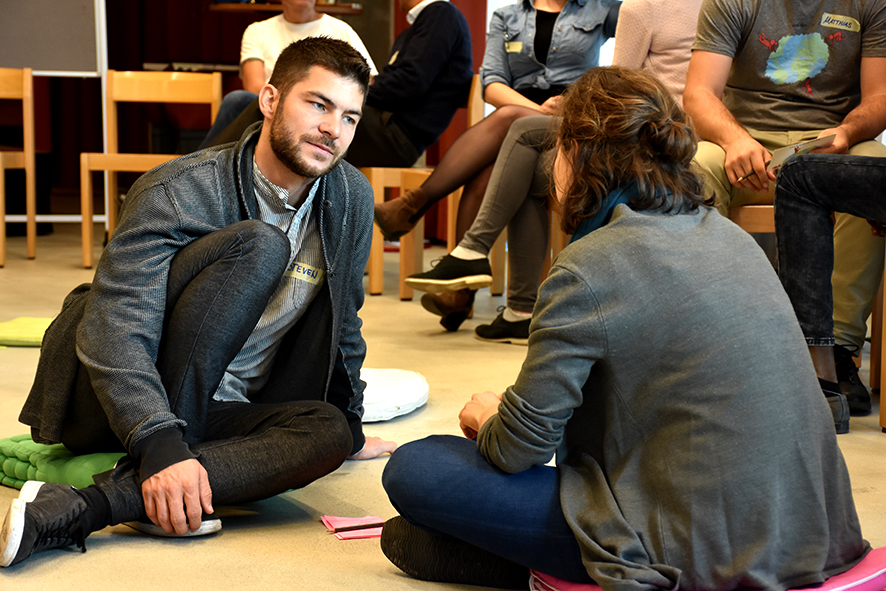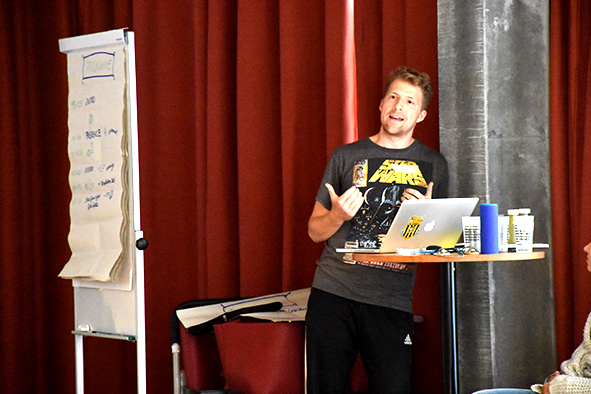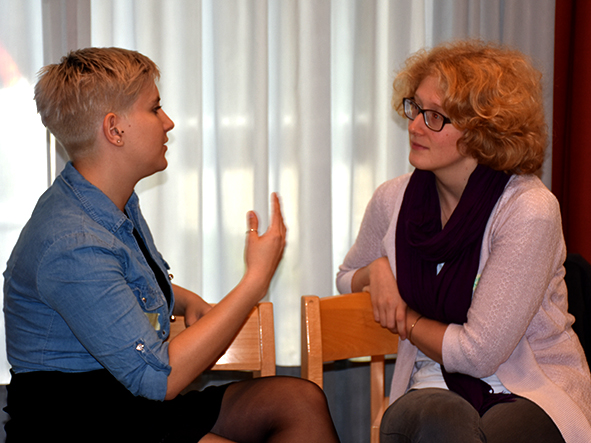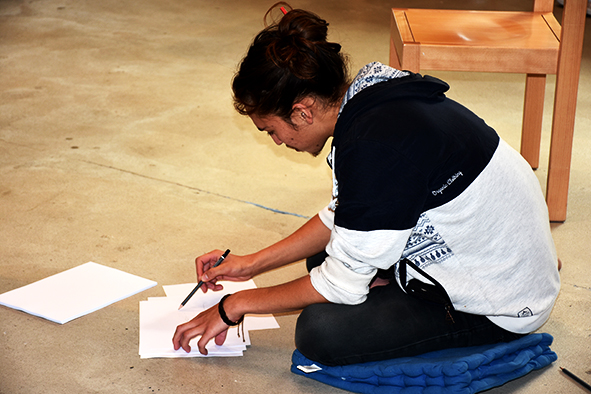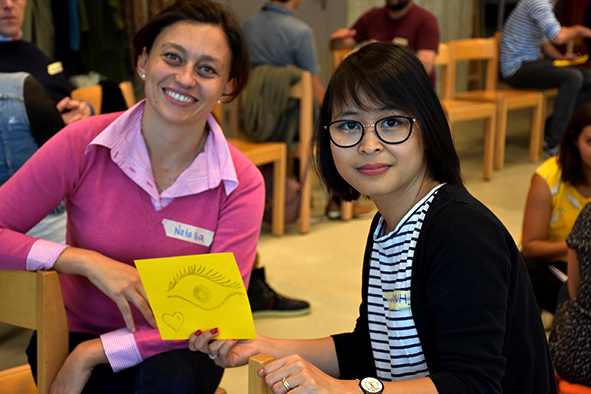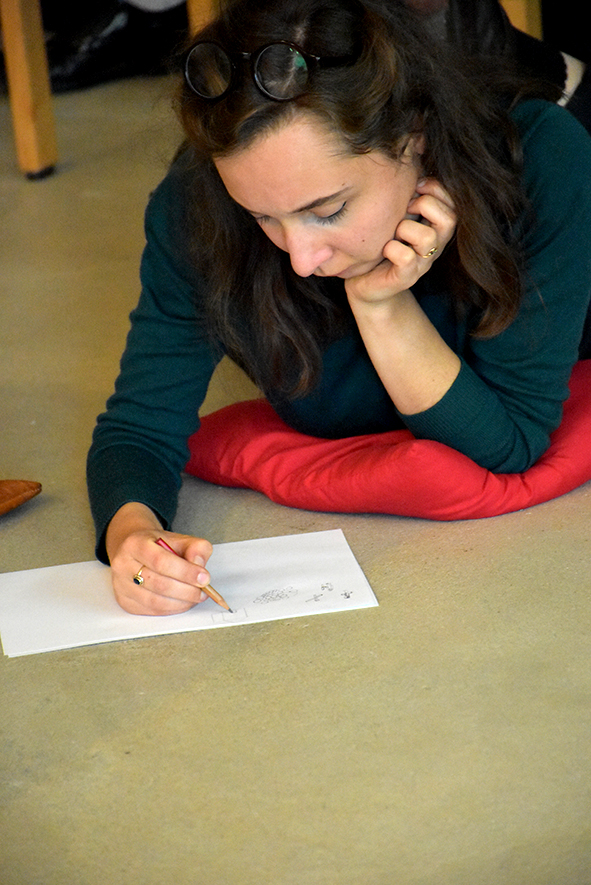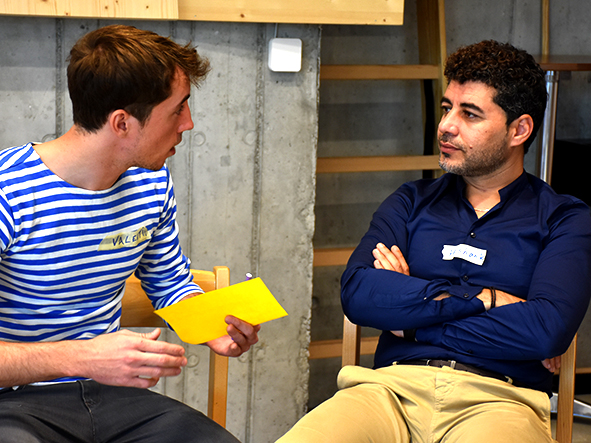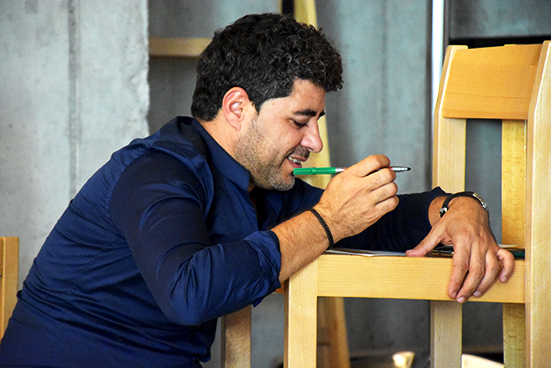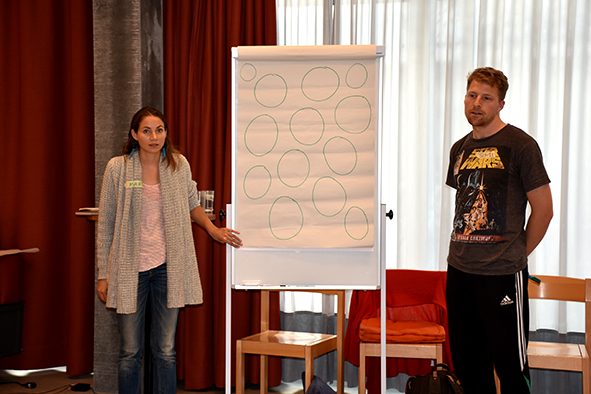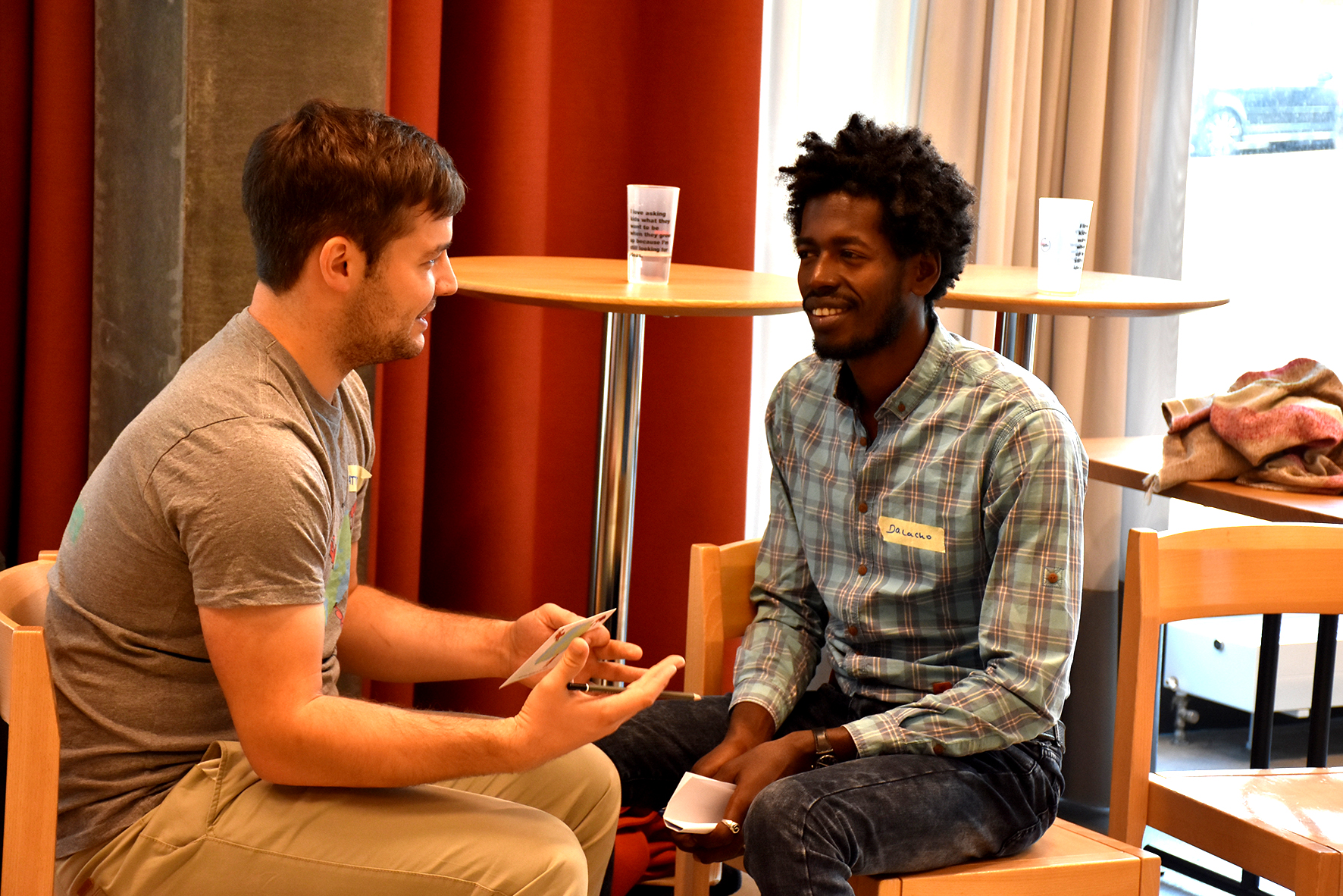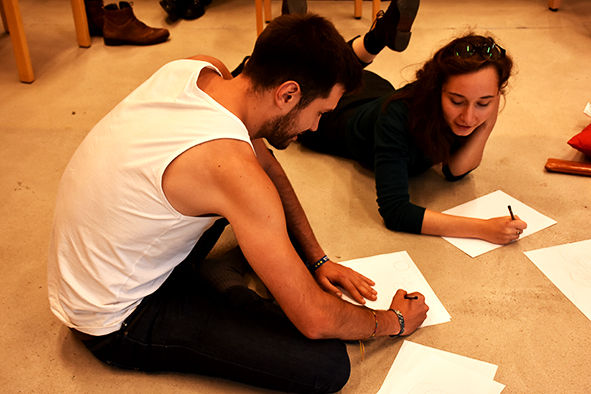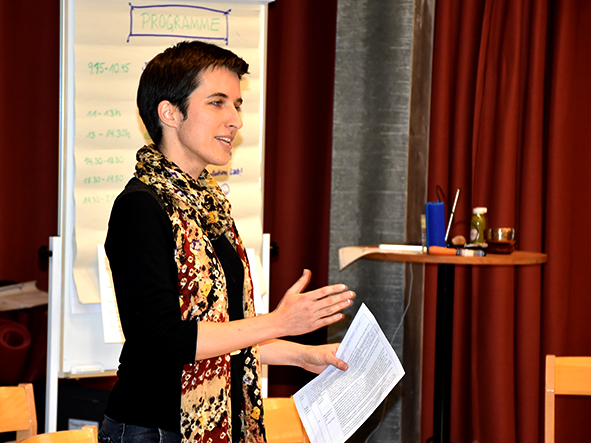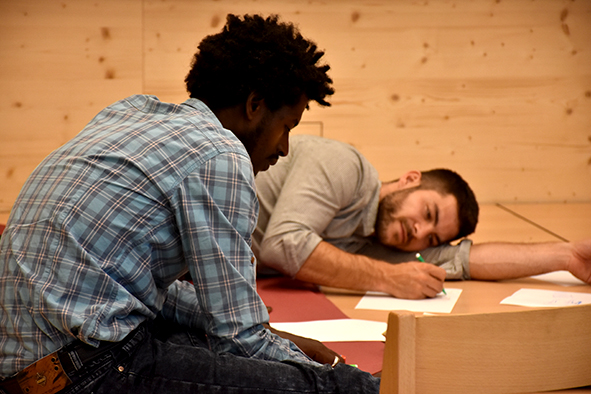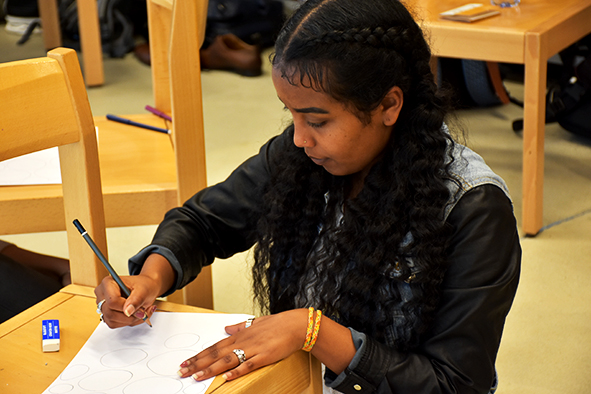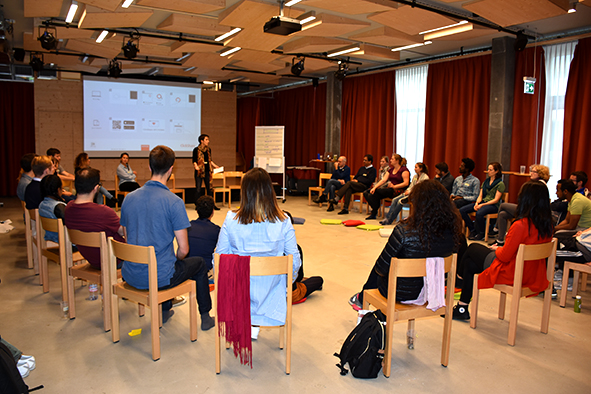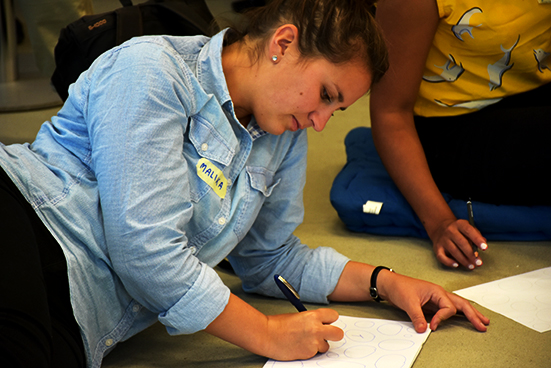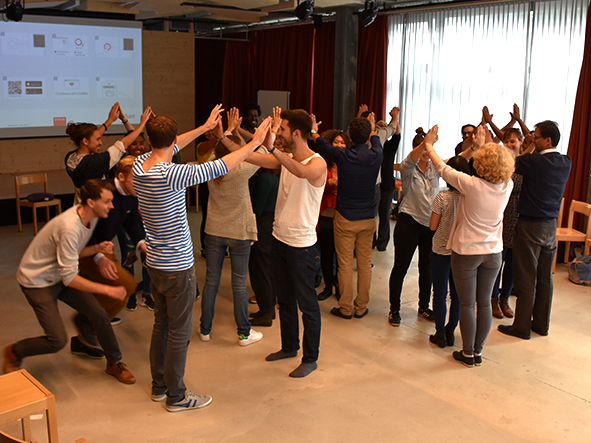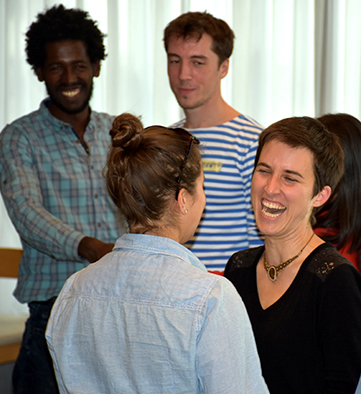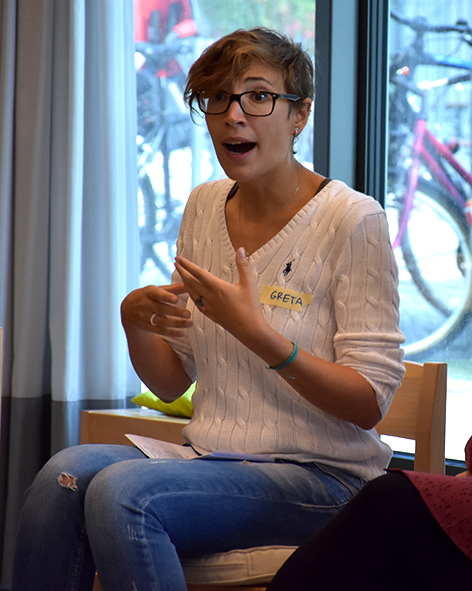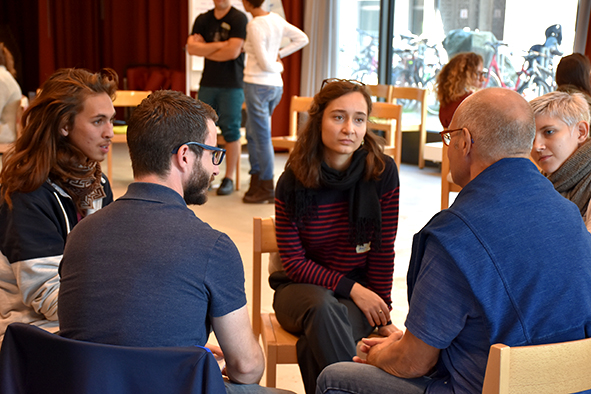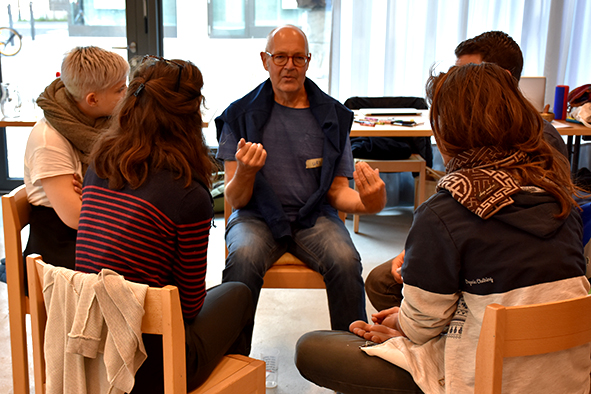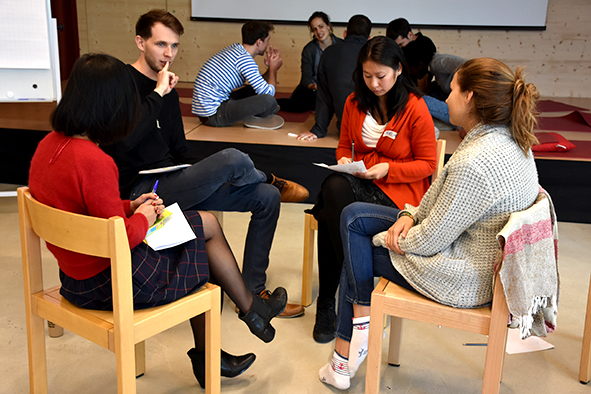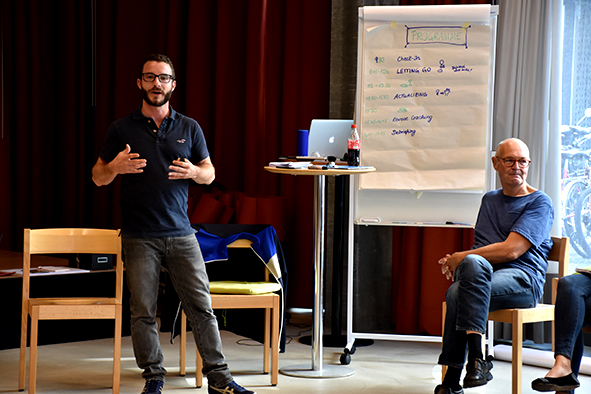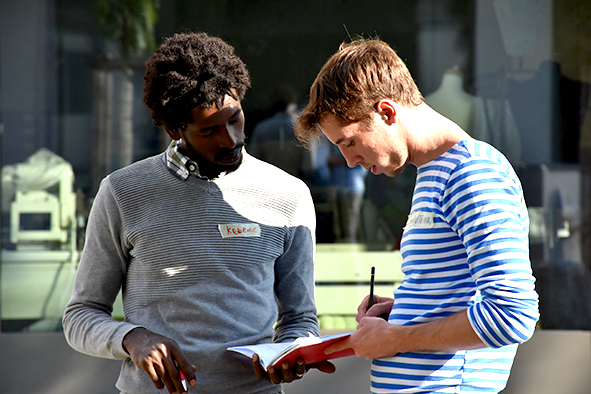At a recent quarterly meeting with the whole euforia team we did a 3D system sculpting exercise from the Presencing Institute. Doing this exercise had two main purposes. On the one hand I had just recently participated in the Presencing Foundation Program in Berlin and wanted to bring back some insights from the training to the team. On the other hand, the 3D sculpting exercise has been a great way to create a shared understanding of the current reality of euforia in a playful yet insightful way. We split the team up into three different groups, using the treasures of our shelves and cupboards at the euforia office to sculpt three different and yet similar structures representing euforia in its creative beauty. Following the method and the analysis of the current reality of euforia that is described below we entered a generative discussion of how we want to see euforia evolve in the future. In short, this has been an effective, inclusive and playful way to talk about current reality and future strategy with the whole team.
What is this method?
3D Sculpting of an individual or collective ‘system’ when combined with inquiry from four specific vantage points allows for a 360 degree view of current reality and its underlying (emerging future) potential. An assortment of items, that contain basically anything from playdough, cotton, pipe cleaners, figurines to any kind of small objects is provided to the group. Using any selection of the available material, a model or sculpture that represents the current system is co-created. After completing the sculpture that depicts the current reality of the system that wants to be transformed, the group moves around the sculpture stopping at each side reflecting on the characteristics of the present system.
East: Feeling, Relationships
South: Truth, Practicality
West: Perspective
North: Vision & Purpose
After completing the analysis from four directions, you can adjust and change the model so that it better represents the future that you want to create. This then allows to identify the key strategic leverage points in changing the current system.
Why use this method?
To create an externalized view of current reality and gain insight, from multiple perspectives, into some of the systemic underlying causes and shaping factors. To sense and surface the inherent possibilities pushing through current reality, and to begin to activate them.
Underpinning concepts
Symbols: When depicting the 3-dimensional model of current reality and future possibility, an assortment of materials and objects to represent in symbolic form the forces at play, arranged according to one’s sense of their relationship and proportion, spatial proximity or distance, showing concrete elements as well as intangible essences or dimensions. Anything can be made to represent anything.
Archetypes: An Archetype represents a universal aspect of the human psyche or stream of consciousness rooted in the larger field. When we step into these streams of perceptions, we experience the world through different lenses almost like different facets on a prism. Gazing on the scenarios of our lives and work through these facets, new wisdom and perspective begin to appear.
-Severin von Hünerbein
